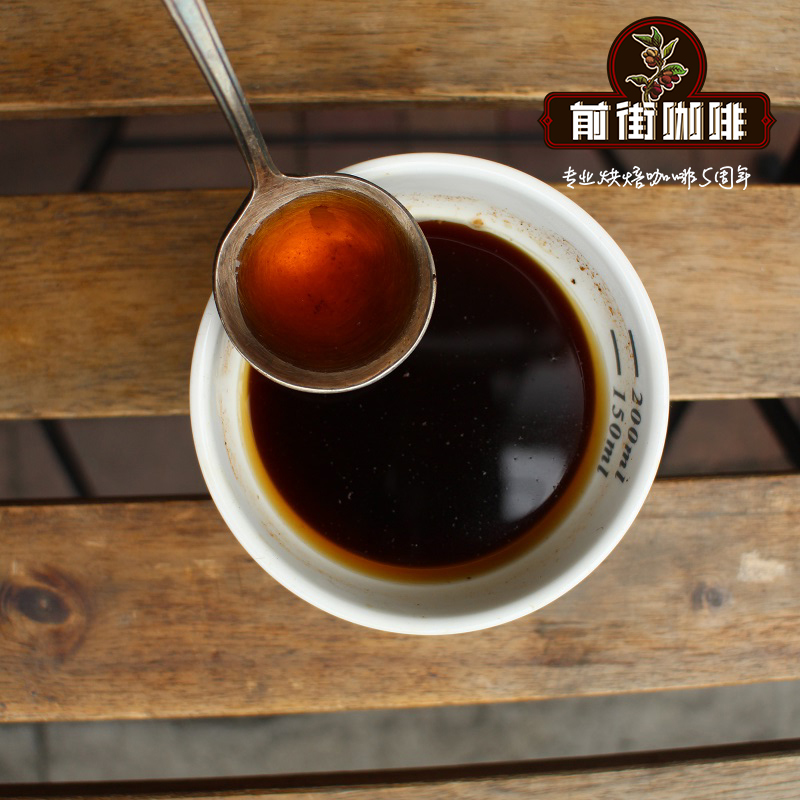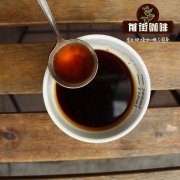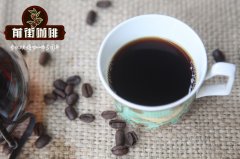How many coffee producing areas are there in Mocha, Yemen? How to eat mocha coffee beans with different flavors and characteristics in different producing areas

Professional coffee knowledge exchange more coffee bean information please follow the coffee workshop (Wechat official account cafe_style)
How many coffee producing areas are there in Mocha, Yemen? How to eat mocha coffee beans with different flavors and characteristics in different producing areas?
In the common Yemeni mokas, Mokha Mattari is the most famous. Produced in the province of Bani Matar (also known as Bany Mattar), Madali is a coffee produced at high altitude. it usually has a good aroma of red wine, dry fruit, thick taste, deep roasting and often bitter sweet chocolate. Yemen, a traditional Muslim country, produces orthodox sun-treated coffee. Mattari Marta Moca, produced in the Bani Mattar region, has a clear red wine texture and a deep and charming dark chocolate flavor. In 2011, this batch of top Matari mochas had more dried tropical fruit flavor than in previous years, which not only increased the depth of the level, but also improved the level of preparation for raw beans. Not only green and neat raw beans, but also significantly reduced the proportion of white beans, broken beans and unripe fruits. It is a rare super-level sun-dried coffee bean.
Due to the sharp decline in production due to political instability in Yemen in recent years, Mokamadali, the most famous coffee industry, has become a target for water adulteration, sometimes mixed with lower-grade shoddy beans. Nowadays, even if it is marked as Madali, it is not a guarantee of high quality. Good quality Madali beans are small, raw beans have sweet wine aroma and moderate ripe fruit fermentation flavor, excellent Madali performance will never let coffee gluttons down!
Tree species: Hairloom Yemen Moka Seedstock
Matali coffee particles are small and slender, uniform color represents the best quality. With unique and rich flavors of red wine, dried fruits, grapes, cinnamon, tobacco, and the most well-known chocolate, coffee beans have the aroma of jasmine after grinding, and the aroma of fermented wine can be smelled at high temperature after brewing. Spat taste a little bit of grape acid change in the mouth, Shengjin sweet and round with cocoa chocolate sweetness, when the temperature drops, begin to taste changeable and complex taste, retain malt sweetness is very charming The overall style is gentle and introverted, with aroma and finish with mellow mocha, which is worthy of the coffee.
Yemeni mocha coffee producing areas:
Mokha San'ani is a mixed bean of tens of thousands of small farms on the hillside near the capital San'a (Picture 2). Planted at a slightly lower altitude than Madali, generally speaking, it tastes thinner and less acidic, but it has a good fruit flavor and often has better ripe fruit and wild game than Madali. According to experience, the quality of Sanani varies greatly, and sometimes there are inferior products with flat flavor, fishy smell and excessive fermented flavor. Careful cup testing and selection is a must for coffee importers to do their homework and absolutely not to be lazy.
Mocha Yishi Mary (Mokha Ismaili) is one of the traditional ancient tree species, planted at a high altitude, more than 6500 feet, characterized by more round beans, smaller beans than Madali, thick taste, high complexity, in general, often surpass the performance of Madali. This is the least produced and most expensive Yemeni mocha (Yemeni mocha is no longer cheap). The high-quality Mokayishi Mary is produced in Hirazi (although it is famous as Bani Matar, it is the best-known local reputation in Yemen). The highest elevation in Hirazi is 8000 feet.
Mokha Rimi is produced in the Djebel Remi (also known as Raimi, Rayma) area and is similar in quality to Sonani. In my experience, Mokaremi is usually slightly fermented, occasionally showing a surprisingly strong sweet aroma of raisins, and when baked properly, the coffee beans smell like opening a full-bodied bottle of jam.
Mokha Yafeh, produced in the province of Yafeh (also known as Yaffe) in southern Yemen, is an uncommon Yemeni mocha. It is the only "southern flavor" in Yemen, and its production is small. Almost all of it is sold to the neighboring United Arab Emirates, and it is rarely seen in the boutique coffee market.
A coffee expert once said: "the taste of Yemeni mocha is so diverse that it varies not only from different places, different tree species, and different batches, but also from each sack or even every cup." Because of his complexity and variety, how to bake the best flavor of Yemeni mocha is a challenge for coffee roasters. Medium and shallow roasting shows sweet fruit, mild, warm sun-fermented flavor; deep baking shows a strong aroma of red wine, bitter sweet chocolate aftertaste, in the taste again and again, "the aftertaste is lingering for three days." No wonder there are so many coffee gluttons who are so keen on this way, listing the Yemeni mocha as their favorite!
A confusing name
There are no general guidelines for the naming of Yemeni coffee, and there is no official grading system. Local residents have their own classification system, with hundreds of coffee codes and names for internal classification, but it is not applicable to commercial markets (for export). In the commercial market, the Yemeni mocha is usually named in one of two ways: "place name", or "tree species name".
Take several Yemeni mochas that have been sold as an example: Yemeni Mokamadali Mokha Mattari and Yemeni Mokasanani Mokha San'ani are produced from Bani Matar province and the hillside near the capital San'a, respectively, while Yemeni Mokayishi Mary Mokha Ismaili adopts the "tree species naming method", which is produced in Hirazi southwest of Bani Matar.
It is worth mentioning that Ismaili is both a name of an ancient Yemeni tree species and a place name, which is often confusing and difficult to distinguish. The only way to know whether the Mokha Ismaili you purchased refers to tree species or place names is to ask your supplier. Generally speaking, we mark it as follows: Yemen Mokha Ismaili (Hirazi) indicates the origin in parentheses is relatively clear.
Glass test report: wet aromas similar to dried pineapple and red wine in the front, with deep and sweet Merlot red wine in the middle, with a hint of wood and light leather, and a very strong dark chocolate taste at the end. The thick and mellow feeling makes this cup of coffee have the characteristics of long and smooth mouth.
Qianjie recommended cooking:
Filter cup: Hario V60
Water temperature: 88 degrees
Degree of grinding: small Fuji degree of grinding 4
Cooking methods: the ratio of water to powder is 1:15, 15g powder, the first injection of 25g water, 25 s steaming, the second injection to 120g water cut off, waiting for the powder bed water to half and then water injection, slow water injection until 225g water, extraction time about 2:00
Analysis: using three-stage brewing to clarify the flavor of the front, middle and back of the coffee. Because the V60 has many ribs and the drainage speed is fast, it can prolong the extraction time when the water is cut off.
Important Notice :
前街咖啡 FrontStreet Coffee has moved to new addredd:
FrontStreet Coffee Address: 315,Donghua East Road,GuangZhou
Tel:020 38364473
- Prev

[Yemeni Mokamatari] the freshly ground brewing method of tanned coffee? The nomenclature source of mocha coffee beans
Professional coffee knowledge exchange more coffee bean information please follow the coffee workshop (Wechat official account cafe_style) [Yemeni Mokamatali] sun-dried coffee brewing method? Where does the name of mocha coffee bean come from? Matali is the most famous coffee bean in Yemen. It is located in the Bani Matari, west of the capital Sanaa. It has a strong and thick flavor.
- Next

What is Ninety Plus 90 + coffee? Ninetyplus coffee90+ coffee flavor
Professional coffee knowledge exchange more coffee bean information Please follow Coffee Workshop (Wechat official account cafe_style) Ninety Plus Coffee is a raw bean company, hereinafter referred to as: (90 +) Ninety plus is an internationally renowned coffee bean production and marketing company, and is famous for providing rare and unique raw coffee beans. In addition to working directly with coffee farmers
Related
- Detailed explanation of Jadeite planting Land in Panamanian Jadeite Manor introduction to the grading system of Jadeite competitive bidding, Red bid, Green bid and Rose Summer
- Story of Coffee planting in Brenka region of Costa Rica Stonehenge Manor anaerobic heavy honey treatment of flavor mouth
- What's on the barrel of Blue Mountain Coffee beans?
- Can American coffee also pull flowers? How to use hot American style to pull out a good-looking pattern?
- Can you make a cold extract with coffee beans? What is the right proportion for cold-extracted coffee formula?
- Indonesian PWN Gold Mandrine Coffee Origin Features Flavor How to Chong? Mandolin coffee is American.
- A brief introduction to the flavor characteristics of Brazilian yellow bourbon coffee beans
- What is the effect of different water quality on the flavor of cold-extracted coffee? What kind of water is best for brewing coffee?
- Why do you think of Rose Summer whenever you mention Panamanian coffee?
- Introduction to the characteristics of authentic blue mountain coffee bean producing areas? What is the CIB Coffee Authority in Jamaica?

